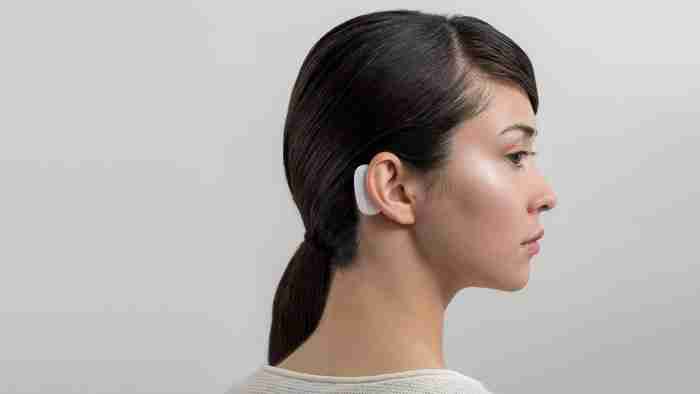“Even in a benign AI scenario, we will be left behind,” Elon Musk spoke glumly of our pathetic odds in the wake of an AI apocalypse like something out of “Terminator” or “Avengers: Age of Ultron.” While we’re not enlisting the help of The Vision or Sarah Connor just yet, there is a kernel of truth here: We’re integrating more sophisticated tech into our phones, our appliances, our houses, and our cars – but we’re leaving behind one valuable part of the equation – us.

Musk’s strategy is not to try and one-up ourselves over tech; in his eyes, that’s a lost cause. But if you can’t beat ’em, Musk advises we join them.
“I think with a machine interface we can go along for the ride and effectively have the option of merging with AI,” he said. He’s proposing a (very ambitious) concept of how to do just that.
The idea
Symbiosis between human and machine has been a sci-fi concept since the days of Doctor Who and Star Trek, and because (or despite?) of its mainstream appeal, we’ve largely dismissed notions of making science fiction into science fact. Elon Musk is heading a new project to insert a computer connection directly into a human brain , creating a true cybernetic future, and have already taken the first steps with chimpanzees.
“The monkey was able to control the computer with his brain, just FYI,” Musk said proudly. The team expects to be ready to move testing to human subjects by next year, and the process is allegedly as safe and painless as Lasik eye surgery .

Why this is new
If you’ve heard of similar tech, that’s because it (sort of) already exists: There are scattered FDA-approved devices that are intended for the disabled. Examples include a deep-brain stimulation device that helps people with Parkinson’s disease control their tremors.
Musk’s new implant chip would be created by Neuralink , his own brain-computer interface start-up. Neuralink is Musk’s own private company that he created back in 2016, and is based out of San Francisco. There’s one major difference that will bring Musk’s project to the forefront: The process.
Elon Musk’s Neuralink Says It’s Ready for Brain Surgery https://t.co/SuF9DgEWjJ
— Neuralink (@neuralink) July 17, 2019
The process
The chip itself is a thread-like device that’s thinner than a human hair. It’s so thin that the grafting procedure looks almost like sewing. Neuralink has a computer system set up so that during this process the grafting avoids blood vessels on the surface of the brain.
These flexible threads are actually a thin cellophane-like material that insulates the conductive wires which link to a series of tiny electrodes.
“One of the big bottlenecks is that a mechanical drill couples vibration through the skull,” said Max Hodak , Neuralink’s president and one of the company’s founders, “which is unpleasant, whereas a laser drill, you wouldn’t feel.” Since the device itself is so thin, it would far less invasive than our current tech.

Once the procedure is complete, the implant is wirelessly connected to a receiver worn behind the ear. The receiver communicates with a computer or smart device, and voila! You can talk with electronic appliances with your mind.
Science confirms the internet is changing our brains
A whole can of worms
While this is some serious next-gen, cutting-edge thinking, is it really for the best? We’re up to our eyeballs in privacy issues with email, messaging, texting, and phone calls. Do we really want people to access cloud data with a chip in their brain?
Facebook had to wade through red tape just to give us a new camera . This is a thousand times more invasive! If any of this tech comes to fruition, we need to seriously evaluate what it means about our consent and privacy.
For better or worse, there are some definite roadblocks for Neuralink to tackle in the coming year. Researchers still need proof that the insulation of the neural threads can survive long periods (plastic can deteriorate in the salt solution of the brain’s environment!), and moreover they’re not the only company trying their hand at the puzzle.
Facebook’s been working on a “non-invasive” device that lets you send messages with your mind , and even the Pentagon’s been financing similar research. They’ve already created interfaces that allow for quadriplegics to independently manipulate robotic limbs in order to accomplish tasks like drinking or picking up small items.
Scientists create gloves that let you touch virtual objects
On the other hand, Elon Musk is no pushover. We’re talking about a guy who successfully launched and landed heavy rockets and has a lot of financial backing to push his projects to completion. As of July 2019, Neuralink has received $158 million in funding (of which, $100 million came from Musk himself) and is employing a staff of 90+ people.
Elon Musk’s Secretive Brain Tech Company Debuts a Sophisticated Neural Implant https://t.co/Hn0SE18lkz
— Neuralink (@neuralink) July 18, 2019
Do you think this is a crackpot pipe dream, or are we heading towards a future where we can turn on the TV just by thinking it? Let us know if you’d be interested in getting this brain chip, and stick with Softonic for the latest in tech news!
More cool inventions
App-controlled NBA jersey can change name and number ►
Here’s how you can try Puma’s self-lacing shoes for free ►
Futuristic jacket uses app to control temperature ►
Google Project Jacquard weaves tech into our clothes like in Black Panther ►